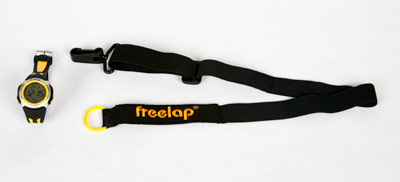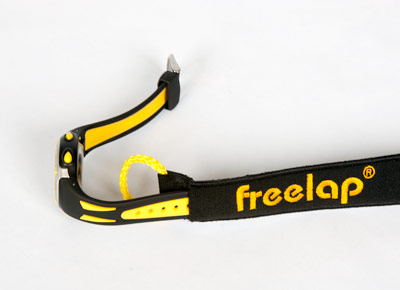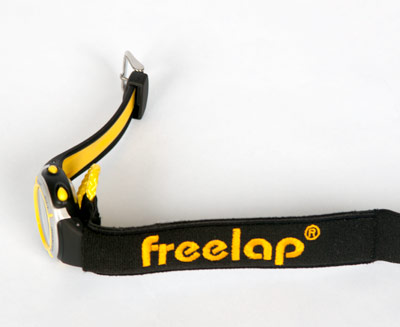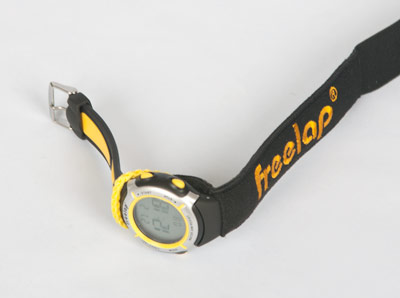The Freelap stopwatch may be worn on the athlete’s wrist or, when assembled with the sprint belt, around the athlete’s waist. The advantage of wearing the stopwatch on the waist is that the position of the stopwatch with respect to the athlete is constant when crossing the path of a transmitter, thus increasing the accuracy. Distance athletes running laps of several hundred meters or more may opt to wear the stopwatch on the wrist since the timing difference is negligible. However, when running short sprints between 10 and 100 meters, the sprint belt is recommended for best accuracy.
Freelap Stopwatch and Sprint Belt

Figure 1: Stopwatch and Sprint Belt.
The stopwatch attaches to the sprint belt in just a few seconds. As shown in the figure below, the tapered strap of the stopwatch is inserted into a sewn pocket in the sprint belt.
Insert stopwatch strap into sprint belt pocket

Figure 2: Insert watch strap into sprint belt.
The stopwatch strap is then pushed all the way into the pocket until the bottom of the watch-face seats against the sprint belt as shown below.
Seat stopwatch bottom against sprint belt

Figure 3: Push the watch strap all the way into the sprint belt.
The other stopwatch strap is then fed through the yellow loop of the sprint belt.
Fully assembled stopwatch and sprint belt.

Figure 4: Fully assembled Freelap watch and sprint belt.
Once the stopwatch and sprint belt have been assembled, the elastic belt can be adjusted to fit the athlete’s waist. If the stopwatch is worn to one side, it should be worn on the side nearest the transmitter when sprinting.


